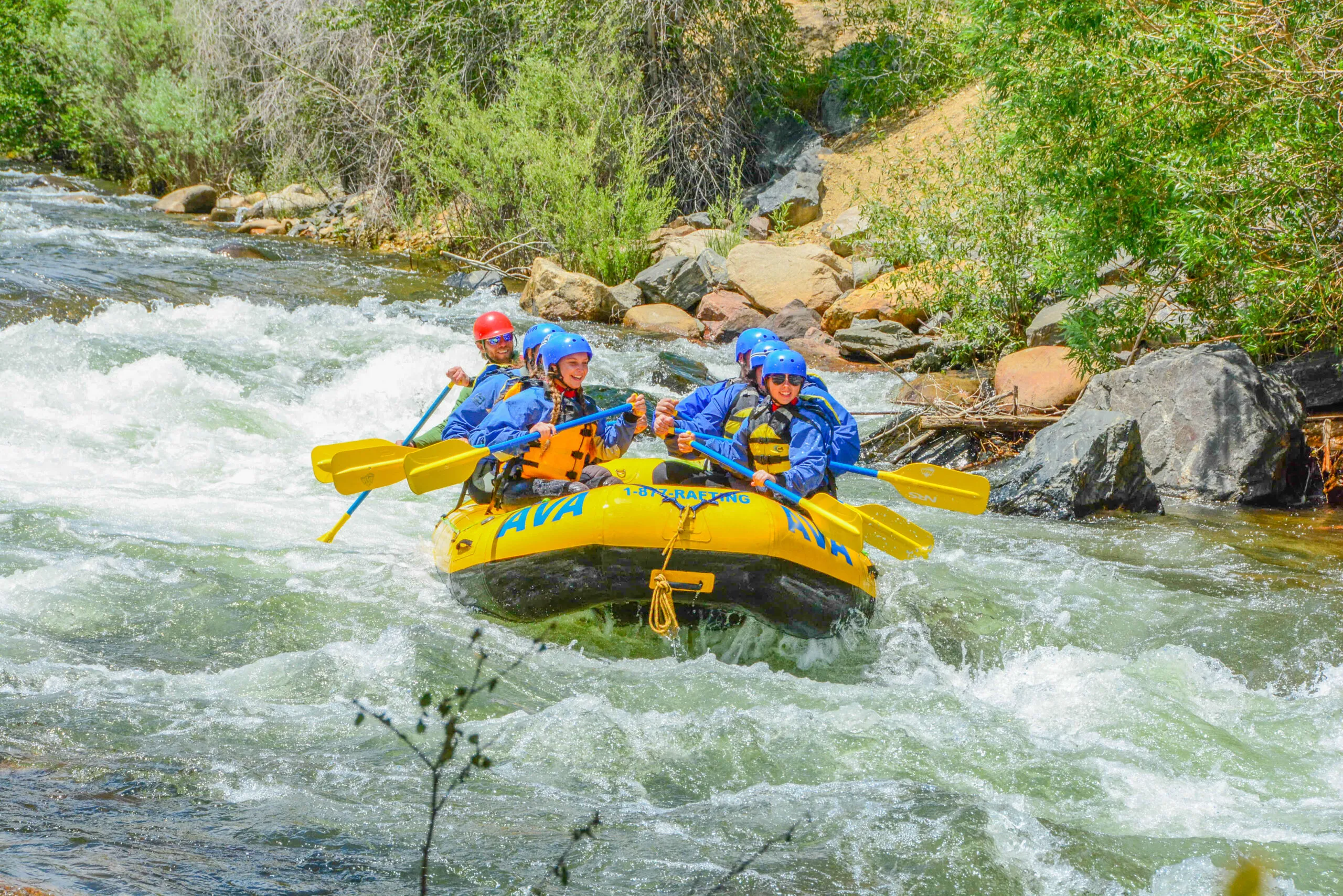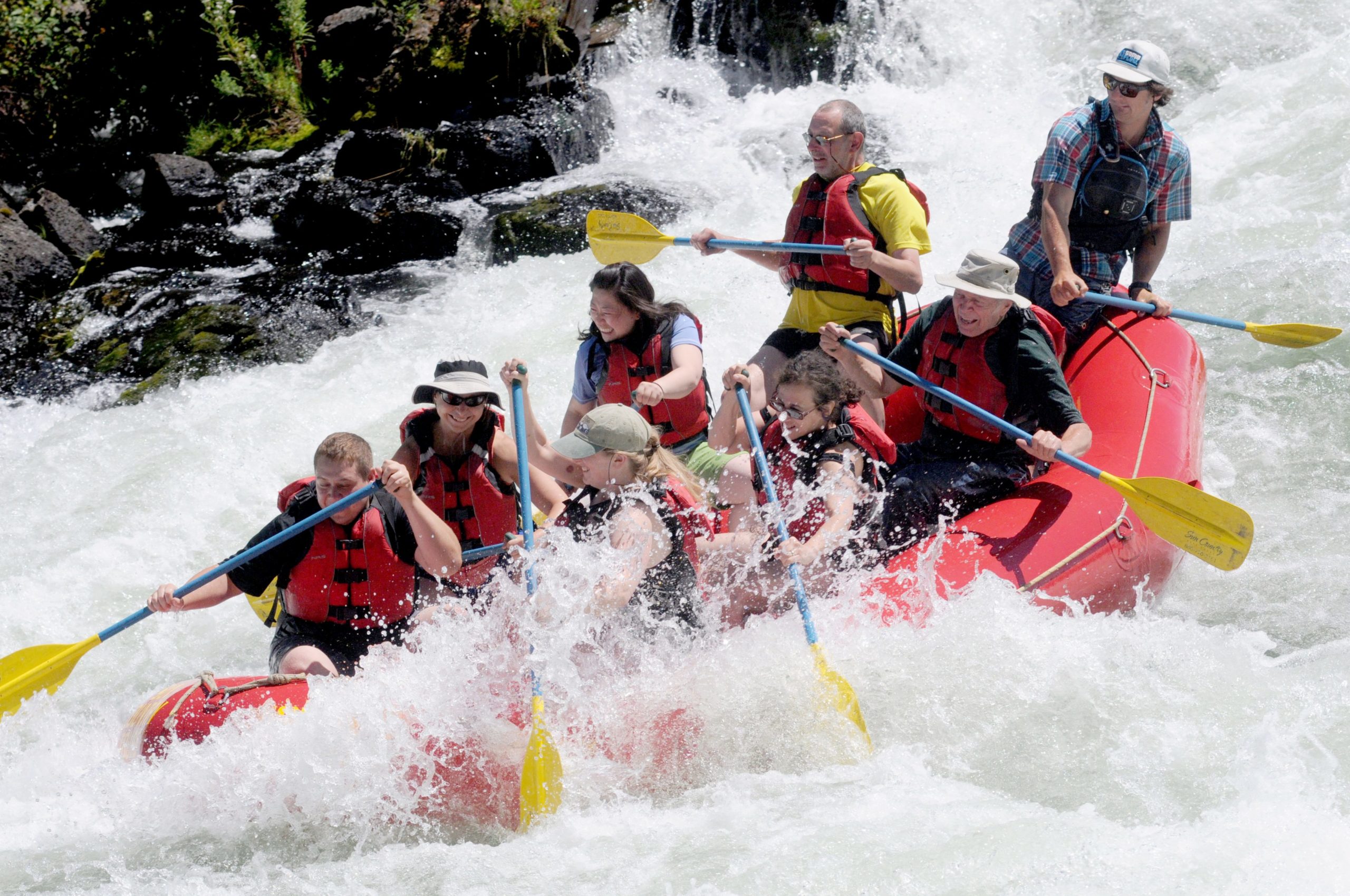Vital Skills for Water Rafting
Grasping the art of water rafting calls for a mix of accurate skills and expertise to navigate the unforeseeable currents of rivers, making it a thrilling yet possibly unsafe activity. From understanding the complexities of river characteristics to swiftwater rescue strategies and seamless team communication, the trip down the river requires a blend of expertise and versatility. White Water Rafting Colorado.
Paddling Methods
Understanding reliable paddling strategies is crucial for navigating water rafts safely and efficiently. Appropriate paddling not just propels the raft ahead however likewise assists in navigating and steering with varying water conditions. One essential method is the forward stroke, where paddlers dip the blade completely into the water and pull it back alongside the raft to generate propulsion. Timing and coordination are key to ensure that all paddlers remain in sync, maximizing the power of each stroke.
Apart from the forward stroke, the draw stroke is essential for making fast modifications or pulling the plethora better to an object. By positioning the paddle blade vertical to the water's surface and pulling the water towards the plethora, paddlers can effectively transform the vessel's direction. Furthermore, the backstroke acts as a useful tool for supporting or slowing down the plethora when needed.
River Reviewing
Efficient paddling strategies, such as the forward stroke and draw stroke, play a vital function in interpreting and browsing river currents, a skill referred to as river reading. River reading entails the capability to assess the speed, deepness, and direction of the water circulation to make informed decisions while browsing rapids. By comprehending just how the water moves challenges and through various networks, rafters can choose the most effective route to securely go across the river.
One secret facet of river reading is acknowledging various types of currents, consisting of swirls, waves, and hydraulics, and recognizing how they can impact the plethora. Eddies, for example, are areas where the water moves in a circular movement, often providing possibilities for rest or critical maneuvers. Waves can indicate the existence of rocks or barriers, requiring fast adjustments in paddling strategy. Hydraulics, frequently understood as "openings," are areas where water recirculates back upstream, posturing potential hazards to rafts.
Grasping the skill of river reading is crucial for safe and delightful rafting experiences, allowing paddlers to navigate challenging waters with confidence and precision.

Swiftwater Rescue
Recognizing swiftwater rescue techniques is important for water rafting fanatics to react effectively in emergency circumstances on fast-flowing rivers. Swiftwater rescue entails a set of specialized skills and understanding targeted at securely extracting individuals from swift-moving water. One essential facet of swiftwater rescue is identifying the risks existing in fast-flowing rivers, such as filters, undercut rocks, and solid currents, to plan and execute successful rescue operations.
Appropriate devices is crucial for swiftwater rescue, consisting of toss bags, rescue ropes, headgears, and personal flotation devices. Rafting enthusiasts should be proficient at using this devices in high-stress circumstances to make sure the security of themselves and others. Furthermore, swiftwater rescue methods commonly entail about his synergy and control amongst rafters to implement intricate rescue maneuvers properly.
Learning swiftwater rescue is extremely suggested for individuals participating in water rafting tasks, as it outfits them with the essential abilities to manage emergency situations quickly and efficiently. White Water Rafting Colorado. By understanding and exercising swiftwater rescue strategies, water rafting fanatics can enhance their security and that of their fellow rafters on challenging river expeditions
Team Communication
Reliable synergy in water rafting depends heavily on smooth interaction among staff member to ensure collaborated and safe navigating with challenging river problems. Clear and succinct interaction is vital for the success of any type of rafting exploration. Team members need to be able to properly communicate important details such as paddling commands, warning signals, and navigational guidelines.
In the frequently uncertain and hectic setting of river rafting, accurate and punctual communication can indicate the difference between a potential calamity and a successful run - White Water Rafting Colorado. Each staff member plays an important duty in the overall communication procedure, whether it be listening diligently to the overview's instructions, passing on Extra resources information to other paddlers, or signaling for help when required
Establishing a typical language and interaction system before hitting the water is crucial. This guarantees that every person gets on the same page and recognizes how to interact successfully throughout the rafting journey. By fostering a culture of open interaction and common respect, rafting teams can improve their efficiency and safety on the river.

Safety Procedures
In the context of water rafting, the structure of group communication established during explorations is more reinforced through strict adherence to security methods. Safety and security protocols are critical in making sure the health of both rafters and overviews throughout water rafting excursions.
One more secret security procedure is the detailed briefing offered by guides before starting a rafting trip. This rundown normally consists of info on paddling methods, what to do in situation of different emergencies, and signals utilized for communication during the journey. Furthermore, it is necessary to have assigned safety kayakers accompanying the group to provide prompt aid if required. By strictly adhering to these safety and security methods, water rafting adventures can be both safe and thrilling for all individuals included.
Conclusion
Finally, grasping essential abilities for water rafting is important for a safe and enjoyable experience on the river. Paddling techniques, river analysis, swiftwater rescue, team interaction, and safety methods are all important parts that add to an effective rafting trip. By refining these abilities, rafters can navigate tough waters with confidence and make sure the safety of themselves and their team participants.
Mastering the art of water rafting calls for a combination of exact abilities and knowledge to browse the uncertain currents of rivers, making it a thrilling yet potentially harmful task. By putting the paddle blade vertical to the water's surface area and pulling the water towards the plethora, paddlers can effectively alter the vessel's instructions.Recognizing swiftwater rescue techniques is vital for water rafting fanatics to respond efficiently in emergency situation scenarios on fast-flowing rivers.Effective team effort in water read what he said rafting counts greatly on seamless communication among group participants to make certain coordinated and safe navigation with tough river problems.In verdict, mastering vital abilities for water rafting is critical for a satisfying and risk-free experience on the river.